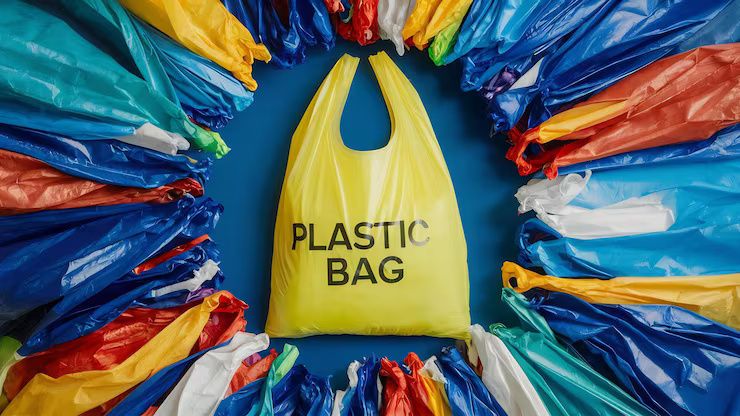Custom Plastic Bags: The Complete Packaging Guide
Custom plastic bags are flexible packaging solutions designed for a wide range of industries such as retail, food, healthcare, and manufacturing. They exist to meet diverse packaging needs—protecting products, enhancing convenience, and supporting brand recognition through design customization.
The concept of plastic packaging emerged in the mid-20th century when industries required affordable, durable, and lightweight materials for storage and transport. Over time, plastic bags evolved from simple carriers to customizable tools for both functionality and communication.
Today, custom plastic bags are used for more than just carrying goods. They serve specific purposes such as maintaining hygiene, preserving freshness, and reducing product damage during handling or shipping. Their adaptability has made them a key element in modern supply chains and daily life.

Importance
The importance of custom plastic bags extends beyond convenience—they are deeply linked to sustainability, consumer experience, and industrial efficiency.
-
Product Protection: Plastic bags shield items from moisture, dust, and contamination.
-
Brand Visibility: Businesses use customized designs for packaging to communicate logos, product information, and safety guidelines.
-
Resource Efficiency: Lightweight plastics require less material compared to other forms of packaging, making transportation more energy-efficient.
-
Reusability and Recycling Potential: Many modern plastic bags are designed to be recyclable or made from recycled content.
Custom plastic bags are used by individuals, manufacturers, and organizations globally. For consumers, they simplify daily life. For industries, they represent a reliable, flexible, and increasingly sustainable packaging choice.
Recent Updates
Between 2024 and 2025, the packaging sector has undergone rapid change, driven by environmental awareness and innovation. Some notable updates include:
-
Shift toward biodegradable plastics (2025): Companies are adopting compostable and bio-based materials made from renewable sources such as cornstarch and sugarcane.
-
Circular packaging initiatives (2024): Global brands have launched programs encouraging consumers to recycle and return used plastic bags.
-
Advanced printing technologies (2025): Digital and eco-friendly inks are being used for custom designs, reducing chemical waste.
-
Smart packaging integration (2025): Some custom bags now feature QR codes or NFC tags, linking consumers to product details or sustainability data.
-
Regulatory-driven innovation: Governments continue to support eco-friendly material research, influencing new product designs and recycling systems.
These trends reflect the packaging industry’s transition from disposable materials toward responsible production and reuse.
Laws or Policies
Regulations around plastic packaging vary globally, but nearly every country has introduced measures to address environmental impact and promote responsible use.
-
Plastic Ban and Restriction Policies: Many countries—including the EU members, India, and Canada—have limited or phased out single-use plastics since 2024.
-
Extended Producer Responsibility (EPR): Manufacturers are increasingly accountable for the full lifecycle of plastic packaging, including collection and recycling.
-
Labeling and Transparency Requirements: Some governments now require packaging to include clear recycling instructions or eco-certification marks.
-
Recycling Targets: The European Union, for example, has set a 2030 target for all plastic packaging to be recyclable or reusable.
-
Incentives for Sustainable Materials: Tax reductions or grants are offered to companies adopting biodegradable or recycled materials.
These policies have influenced the design, production, and labeling of custom plastic bags, driving a global movement toward sustainable packaging solutions.
Tools and Resources
Several tools and resources can help individuals and organizations better understand, design, and manage custom plastic packaging:
-
Sustainability Calculators: Online calculators estimate the environmental footprint and recyclability of different plastic materials.
-
Packaging Design Software: Tools such as Adobe Illustrator and Canva assist with designing branded and compliant packaging layouts.
-
Recycling Information Databases: Websites like Earth911 and Plasticseurope.org offer guides on sorting and recycling various types of plastics.
-
Material Innovation Platforms: Research platforms such as Plastics Recyclers Europe track innovations in polymer recycling and biodegradable alternatives.
-
Government Portals: Many national environmental agencies publish official guidelines for compliant packaging production and disposal.
These resources help manufacturers, designers, and policymakers create packaging that aligns with environmental and regulatory goals.
Example Table: Comparison of Plastic Bag Types by Material
| Type of Plastic Bag | Primary Material | Key Feature | Common Use Case |
|---|---|---|---|
| LDPE (Low-Density Polyethylene) | Flexible and soft plastic | Lightweight, moisture-resistant | Grocery and retail packaging |
| HDPE (High-Density Polyethylene) | Strong and rigid plastic | Durable and reusable | Industrial and heavy-duty use |
| Biodegradable Plastic | Plant-based polymer | Compostable under conditions | Eco-friendly packaging |
| Recycled Plastic | Reprocessed plastic waste | Reduces waste and carbon impact | Sustainable product packaging |
FAQs
What are custom plastic bags made from?
They are typically made from polymers such as polyethylene (PE) or polypropylene (PP), though newer versions use biodegradable materials derived from renewable resources.
Are custom plastic bags recyclable?
Yes, many plastic bags can be recycled, depending on local facilities and the material type. Some are made from recycled content to further reduce waste.
How do biodegradable plastic bags differ from conventional ones?
Biodegradable bags decompose under certain environmental conditions, breaking down into natural elements, while conventional plastics can persist for decades if not recycled.
What are the main environmental concerns with plastic bags?
The main concerns include improper disposal, pollution, and non-biodegradability. Recycling, reusing, and responsible material choices can significantly reduce these impacts.
Are there global efforts to reduce plastic waste?
Yes. Initiatives like the UN Environment Programme’s “Beat Plastic Pollution” campaign and various regional agreements are pushing for sustainable packaging and circular economy solutions.
Conclusion
Custom plastic bags remain a vital component of global packaging due to their adaptability, efficiency, and functionality. However, the conversation around them has shifted toward sustainability and innovation.
With new materials, eco-friendly technologies, and regulatory support, the future of custom plastic packaging lies in responsible production and circular use. Businesses, designers, and consumers all play a role in reducing waste through smarter choices—whether by opting for recycled materials, following disposal guidelines, or supporting biodegradable innovations.





